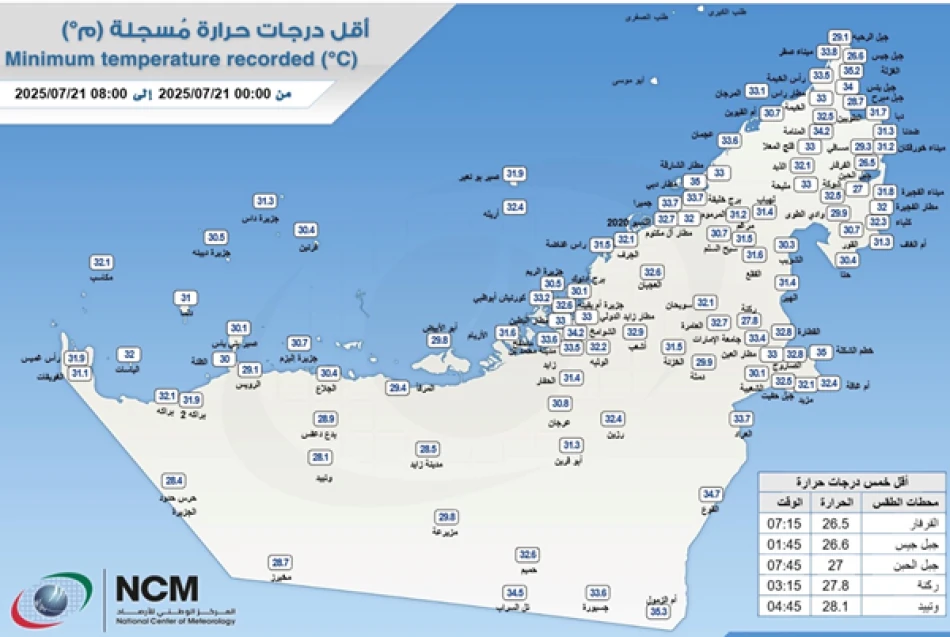
UAE Weather Authority Reveals Lowest Temperature Recorded in the Nation
UAE Records Remarkably High Winter Low of 26.5°C, Highlighting Region's Climate Extremes
The United Arab Emirates experienced its coolest morning temperature of 26.5°C (79.7°F) on Monday, recorded in Al Farfar, Fujairah—a reading that underscores the Gulf nation's consistently warm climate even during winter months. The temperature, captured at 7:15 AM local time, reflects the UAE's position as one of the world's hottest countries year-round.
A "Cool" Morning by Desert Standards
The National Center of Meteorology announced the temperature reading through its official social media channels, marking what constitutes a relatively cool morning for the Emirates. Al Farfar, located in the eastern emirate of Fujairah near the Hajar Mountains, typically experiences slightly cooler temperatures due to its elevation and proximity to the Arabian Sea.
For context, this "low" temperature of 26.5°C would be considered a pleasant spring day in most temperate climates, highlighting the extreme nature of the UAE's desert environment.
Regional Climate Patterns and Seasonal Variations
Winter in the Arabian Peninsula
The UAE's winter season, spanning roughly from December to February, brings the most comfortable weather conditions of the year. During this period, daytime temperatures typically range from 24°C to 30°C, while summer months regularly see temperatures soar above 45°C (113°F), with humidity levels making conditions feel even more oppressive.
Monday's reading demonstrates how even the country's coolest locations maintain temperatures that would be considered warm in most global contexts. The eastern regions, including Fujairah, generally experience more moderate temperatures due to the moderating influence of the Arabian Sea and the cooling effect of the Hajar Mountain range.
Implications for Energy and Infrastructure
These consistently high temperatures, even during winter months, place enormous demands on the UAE's energy infrastructure. The country ranks among the world's highest per-capita energy consumers, largely due to year-round air conditioning needs in residential, commercial, and industrial sectors.
The government has responded with massive investments in renewable energy, including the Mohammed bin Rashid Al Maktoum Solar Park in Dubai, one of the world's largest solar energy projects. Such initiatives become more critical when considering that even the country's "coolest" temperatures require significant cooling systems to maintain comfortable living and working conditions.
Broader Climate Context
The UAE's extreme climate conditions reflect broader regional patterns across the Arabian Peninsula. Neighboring countries like Saudi Arabia, Oman, and Qatar experience similar temperature ranges, making the Gulf region one of the most challenging environments for human habitation without modern cooling technology.
Climate scientists have warned that the region faces particular risks from global warming, with projections suggesting that parts of the Gulf could become uninhabitable during summer months by the end of the century without significant climate action and adaptation measures.
For now, Monday's 26.5°C serves as a reminder of the UAE's unique position in global climate patterns—where what constitutes the day's coolest temperature would be considered quite warm almost anywhere else on Earth.
Most Viewed News

 Layla Al Mansoori
Layla Al Mansoori






